Duane Tudahl on Prince’s Diamonds and Pearls
Prince archivist speaks to SDE
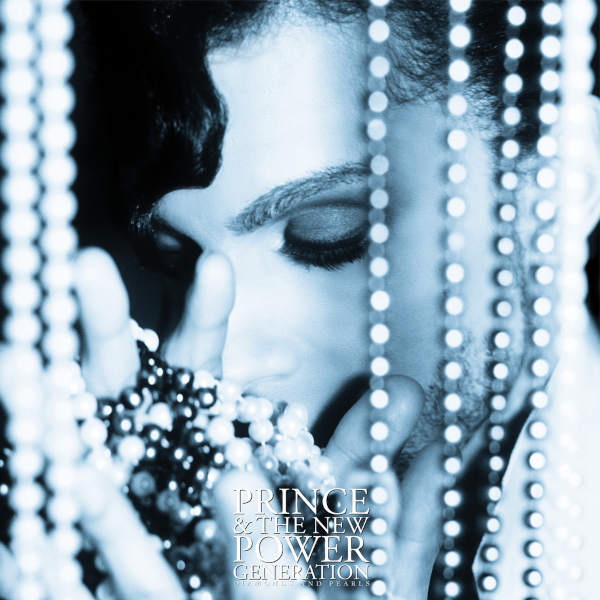
SDE sat down recently with Duane Tudahl who has been working for the Prince Estate for around five years and has recently taken over from Michael Howe. We discuss Prince’s Diamonds and Pearls, his Vault of unreleased material and the approach to putting together the super deluxe edition box sets.
SDE: With Prince you never fail to be impressed with all the music he didn’t release and the quality of it, in particular.
Duane Tudahl: The main thing to me about somebody like Prince is he’s got a whole world of great music that wasn’t released, kind of hidden, that just didn’t fit the project. A lot of his outtakes are what another band or group would be very happy to have on their main album. And they’re complete tracks, because I’m guessing when he was recording them he always “this could be on my album”. He puts a lot of care into every piece of what he does.
Diamonds and Pearls was the first tour that I saw Prince play live, at Earls Court in 1992. I would have been 22 at that point.
That was a great tour to see. Compared to a lot of other bands, Prince puts on a show. A lot of bands would come up and play, but he would actually put on a show. And the nice thing about his concerts is that you could go to several in a row, and they’re all slightly different.
Of course, people will get a feel for this show through the the Glam Slam 92 concert, which forms a large part of this box set
The fact that this is documented on film, is so cool, historically. Because what you’ve got is a guy trying this stuff out, and he’s even trying stuff out for the next album, which is just crazy. He’s already on to the next album, even though he’s just starting to promote this album. But you look up at the stage and you’ve got around 20 people up on this small club stage at one point, doing different things. You don’t even know where to look, sometimes. But it’s a great show.
The thing I always find interesting is that it always looks semi-spontaneous, but when you see the complexity and the detail in the dance routines, and how everyone has to work together on stage, you know it isn’t really like that and there’s been so much rehearsal.
A lot of work goes into making it look easy. Although even though it’s really rehearsed, there’s still an air of spontaneity in there. He’s built it up so high, and they’re all so solid, that he can now do something on top of that. He’s worked the band so hard, to get them to the point where they know everything by rote. They’ve got that down, so now let’s go to the next level! And a lot of bands don’t actually go to the next level.
Duane, we should introduce you to the SDE audience, because I’ve spoken to Michael Howe in the past about Prince’s Sign O’ The Times and 1999 reissues. He’s no longer working with the Prince Estate so you’ve obviously taken over that role and, and are working on this project. How long have you been on board and how has it all been going?
I’ve been with the Prince estate for about five years. I was working with Michael, during that time. So I did work on the Sign O’ The Times box set and the 1999 box. I was the guy who put together the videos for those things as well as curated a lot of the music for it. I come from a TV and documentary background. I worked in television for about 30 years as a writer, director, producer, editor and so I did a lot of reality TV, a lot of documentaries, a lot of films. My official title is the ‘Senior Researcher and Archivist’ for the Vault. So it involves going in there and finding the footage, finding the audio – finding all the options. And, you know, you try to uncover things, and you have to listen to every tape and because sometimes there’ll be something in the middle of a tape.
What have the challenges been with Diamonds and Pearls? As we know with Prince, there is this constant flow of material, new recordings, and one project often meshes into another, so the marker points where one thing starts and another ends might not be so obvious. How do you get going with a project like this?
You start at the beginning, and the biggest thing is figuring out where the beginning is. So for this project, you have songs being recorded during the Nude tour, which is in 1990, in London, and that is really where it started. The tricky thing with Prince is that projects start and end and they overlap quite a bit. So you have to be a little selective about things and you want to make sure you stay within the right parameters. This was started, like I said, in London in July of 1990, during the Nude tour and ended right about when the album’s being released, in October of 1991. So you’ve got a little over a year during that time. Now it’s tricky because, he’s recording for other artists; he’s recording for himself; some of his songs came out on later albums; some of the songs went nowhere… So the challenge is trying to figure out what tells the story the best. The first outtake was called ‘Schoolyard’. The fun thing for me is that the beginning of the album is ‘Thunder’ and the last outtake is the ‘Thunder Ballet’, so it kind of bookends the whole collection. ‘Thunder Ballet’ was done a couple of days after the album came out, so we still think that’s within the range, because sometimes he’ll record a B-side later. But you also want to make sure the songs honour his legacy and do not detract from it; you don’t want to put things on there for numbers.
If you have multiple versions of tracks, is it a case of just making a judgement on the best one?
You have a lot of things you got to think about. First off, you have to think what represents him best. And you look for songs that he’s mixed [himself], so that’s a complete version; the goal is to have as many as many complete versions of what he does as possible. Sometimes you get a song like ‘Cream, take 2’, that was never mixed, because that was an early version of it. So we have to mix that and we have Chris James, who used to work with Prince doing the mixing of that. We try to confer with as many of the engineers and band members as possible. The interesting thing is, sometimes he’ll do a mix of something on the 24-track and then he will go back and change the 24-track. Like he’ll take something out and put another thing in. Sometimes he would go right in the middle of a track where there’s a bass line and he’ll just punch in a guitar lick. So that makes that mix that was done [before] completely unique, because it will never be possible to be recreate it.
You talk about a 24-track tape… Because of the unique way he recorded, do you have evidence of what had gone on in a particular session? Bits of paper that documented it?
There’s often a track sheet which has listed what’s on there, but that doesn’t necessarily mean is exactly what’s on there. Sometimes it says “Sonny bass”, sometimes it just says “bass”. And then you have to actually go to the band and say, “Sonny, what did you play on this?” And sometimes the band members are like, “I don’t remember”. The other part about this is that I’m a writer. I’ve been working on books about Prince’s studio sessions. So I’ve been collecting his work orders for the past 30 years. And so I go into my archive on this stuff and look at what I find on work orders and things that were from this from the studios, whether it’s Paisley Park or Sunset Sound or wherever.
How did you get access to that material, in the first place?
I started writing about Prince about 30 years ago and part of my books are about the studio session, so I went to the studios to talk to them about this stuff. And they said, we’ll tell you what, we’ll give you the work orders and let you make copies of them. Or talk to the engineers, you know, like Michael Koppelman or Susan Rogers; a lot of them have notes about some of their sessions, and they will talk to you about this stuff. Susan Rogers worked on the Sign O’ The Times stuff, but Michael Koppelman worked on Diamonds and Pearls. So I talked to him and other engineers. You build a relationship with these people and you see the paper trail of what was recorded. That is used quite a bit when writing sessionographies in the box sets. It is a bit of a mystery, and like any big mystery, you start talking to the people that were closest to the event
What do you make of the Diamonds and Pearls album? Because, I must admit, as someone who loved Prince in the 80s, you know, Parade, Sign O’ The Times, etc., I remember being a little bit disappointed that he was going down the Rap / Hip Hop kind of route. It felt a little bit to me like he was going to be a follower, not a leader anymore. I was reading the notes in the booklet and there were some interesting conversations at the time around the topic of whether this was going to come across as ‘authentic’ Prince? Are the fans gonna abandon him, will black radio reject him, etc. What’s your take on the direction he was going in?
One of the cool things about Prince is that it’s hard to get bored with him. He’s always gonna throw you a curve. Graffiti Bridge didn’t do that well, and that was basically a Prince solo album, although a lot of that stuff was brought up from The Vault. With this album, he said I’m going to find a new sound by blending Oakland, California, and Minneapolis – put them together and see what happens. But with every Prince project, there’s the risk of liking it or not liking it. And as a fan, you go, I’ll if I don’t like this, I’ll meet you on the next album. I think some of Diamonds and Pearls has aged really well and love the fact that people like Chuck D are coming out and talking about [rapper] Tony M and it’s great that Tony’s getting some love now. The fun thing for me is is when you see the outtakes from this Vault material you see that some of it is not like Diamonds and Pearls [at all]. It just doesn’t fit. There’s a song called ‘I Pledge Allegiance to Your Love’. One of the best songs on the box; it’s a blues song. It could easily be a BB King song. It doesn’t fit on the album but he didn’t try and cram it on there. A lot of artists would cram a great song onto an album where it didn’t belong.
Is it a stretch to say that Prince needed a hit album at this point? Warners were probably thinking along those lines, but do you think Prince stopped and thought, I need to do something different, go in a new direction? Or did that commercial reality never enter his brain?
There’s two different sides of this. The bottom line to me is, when Prince gets pushed into a corner, like when The Revolution was disbanded, he came up with Sign O’ The Times. Kind of like, I’ll show you what I can do. Diamonds and Pearls came right after Graffiti Bridge, which did not do very well. Of course, there’s a competitive side to him, but did he need to do anything? No, Prince wanted to do things, and the only need would be internal. Warner Brothers may have been saying, “we want you to do this”, but Prince is gonna do what Prince does. And that’s one of the coolest things about him; people will look at him for artistic integrity. He goes in so many different directions and each each album or era is just slightly different.
He was already crazily prolific, as everyone knows, but with this band on tap, it would have been an even quicker process to record. He’s not there having to do it one instrument at a time, layering tracks.
I think you’re probably right on that. I mean, he was quick, just by doing himself too, but I think what happened is that these band members really did connect with him. You’re not in Prince’s band, unless he wants you there, because he’s getting something from you, but I think having those great players in the band did make it a little faster, a little richer, maybe. But he was also influenced by these people, so they take him in a direction which just bends slightly, from perhaps what was intended. They’re young, and energetic and excited, and that kept him excited. I think that’s what he did with every band. You’ll find that over the course of his career, he would always have to renew it with fresh blood; new people, new spirits, new outlooks.
And the thing I always find interesting is that Prince wouldn’t waste time for the sake of it. So for example, ‘Thunder’ at the beginning of this record, wasn’t recorded with the NPG but he didn’t re-record it so it sounds a bit more like the rest of the album. Rather like how there’s a live track on Sign O’ The Times. He wasn’t worried about those kinds of details.
And he would go in sometimes with a band recording and overdub some of their stuff. I mean, it’s got to be tricky having a boss that can walk up to you and do your job better than you, at any point.
You mentioned how it started in London. So on a day off from touring, he’d go to the studio for 12 hours and record a few tracks. How did he even secure the studio time at such short notice? Would someone have booked that in advance just to be on the safe side?
By this point, he had a habit of doing that. So I think everybody around him understood that this is going to happen. During that time, during the Nude tour, for quite a while, he stationed himself in London, so I’m sure he set up things way ahead of time. But everybody knew that his his his propensity is to go into the studio and that he had more music than than he had time, if that makes sense.
The notes in the book are brilliant and there’s lots of stuff about how he works with the record label. Everyone always thinks of Prince falling out with Warners and butting heads and stuff like that, but it’s quite pleasing, in a way, to see that they worked together very well on this record. And even though he probably didn’t like it, they would say to him, we need something for black radio and he’d come back with ‘Gett Off’. Was this the last album where that kind of cooperation, or collaboration, worked so well?
Probably. I have a daughter. Early on, our relation was very collaborative. She’s in her teens now, and is branching off and trying things and there’s going to come a point where she’s gonna say, “I don’t need your help anymore”. And I think to a certain extent, it was like that with Prince. And he had hits, so he didn’t have to sit there and think, how can I write a hit? I do think he benefitted from the organisation that that Warner Brothers brought to him, whether it came to selling and promotion and things like this. But this is probably the last time that they really worked really well together. And right after this, was when he did the 100 million dollar contract deal with them and within the next five or six years, they were separating [laughs]. It was a really healthy relationship for a long time, but this is probably the last major album push that they had together.
He was definitely pushing the boundaries, wasn’t he? Because there’s a great story [in the book in the box set] about how he privately presses up 1500 copies of ‘Gett Off’ without officially informing his label. On the one hand, that’s brilliantly creative, but doing those kinds of things was never going to last within the confines and constraints of a major record label.
I’ve always looked at Prince’s career in three stages. In the early stages, he was a rebel, and he was doing what he wanted to get attention. Then, 1999 and Purple Rain came along and he became a superstar, and he stayed superstar for a long time. But I think, a little bit after this album, and maybe even during some of this album, he became the rebel again, saying to himself, you know what, I’m going to take charge this stuff again. That’s such a great story, going behind Warner Brothers’ back to press this song [on vinyl]. To me, that’s the funniest thing ever. Knowing that he actually did that is hilarious, to me. But I don’t think he had the cooperation with with Warner Brothers on an album after this, like he did with Diamonds and Pearls. You’re right, that’s a good point.
Tell us about the Dolby Atmos mix of this studio album. Who did that spatial audio mix and how did that come about?
That was Chris James. He is our main mixer for a lot of stuff. Chris worked with Prince during the last few years of Prince’s life. So he understood what Prince wanted, he had worked intimately in the studio with him. I think you want to have somebody that can refer back to lessons he learned from Prince. That’s really important.
Are there any plans to go back and do Sign O’ The Times or 1999 in Atmos?
I don’t know of anything like that, but I think it’d be cool if we could do something like that. But I don’t have any visibility as far as that is concerned.
What’s the state of Prince’s Vault? This might be a stupid thing to say, because I know it’s massive, but has it all been digitised yet? Or do you just digitise it as and when you need to for what the project you’re working on?
What I can say is that the ball is always in motion. There’s always something going on and you have a 40 year career and you want to make sure you do a proper investigation of each thing. You don’t want to just randomly digitise everything. There’s so much to it, because you have half-inch mixes, quarter-inch mixes, two-inch tapes, one-inch videos tapes, you have 3/4″ videos, you have all these different types of video formats, some of which aren’t even around anymore. You have all these cassettes, you have film, you have stills, you have everything that is basically the collection of a man’s career. So it’s gonna take a little time to make sure you get everything done. The priority is getting it done right, and not right now. Curation is very important because you want to be as meticulous as possible, and make sure that you connect the dots. For example, on the box set there’s a song called ‘Dark Side’ and there’s also a song called ‘Blood on the Sheets’. ‘Dark Side’ is the early version of ‘Blood on the Sheets’ and they’re both instrumentals, but they both on here to hear how his sound changes over time. The first one is recorded in Japan and the second one is recorded at Paisley Park, a few months later, and it’s much harder sound. And that to me is fun. Because when you get to see and hear the progress of a song. To me, it’s like going back to Rembrandt drawing sketches, where you can say, okay that’s what he started with. You go to his notebooks, and you see these little sketches. I think it’s a great lesson for anybody who studies music, or anybody who’s in a band to see, basically, how the sausage is made.
But there isn’t too much of that, though, to be fair, because if you think of The Beatles, and a song like ‘Strawberry Fields Forever’, one of the box sets has quite a few different versions of that song but you’re not really giving us that with these Prince box sets…
I love the Beatles’ boxsets. But the Beatles didn’t have nearly the kind of vault that Prince did. And they recorded for eight years, so they didn’t have this deep reservoir of music. With the Prince box sets you may not see the individual tracks doing that, because he didn’t really do demos that much, but you see it in what he did, because there’s dozens of songs on these box sets that tracks his emotions. What we do is we try to make sure that the Vault songs are in chronological order. So they tell the story of what Prince is going through at the time. Each song is really like a Polaroid photo where he is at that moment. Happy, sad, angry, whatever it is, and he may do the song in a few hours. That’s a great snapshot of exactly what he’s doing at that moment. So when you do the box sets, you want to honour Prince by making sure you allow him to tell his story, via his music, in chronological order. Towards the end, there’s a song called in ‘A Letter for Miles’. And that was really important because it came right after Miles Davis died. So the story is not necessarily being told by having 15 versions of ‘Strawberry Fields Forever’, which I admit is still cool, but there’s not really 15 versions of anything. Okay, you do have 15 versions of ‘Gett Off’ but those are remixes.
Thanks to Duane Tudahl who was talking to Paul Sinclair for SDE. The Diamonds and Pearls box sets are available now.
Compare prices and pre-order
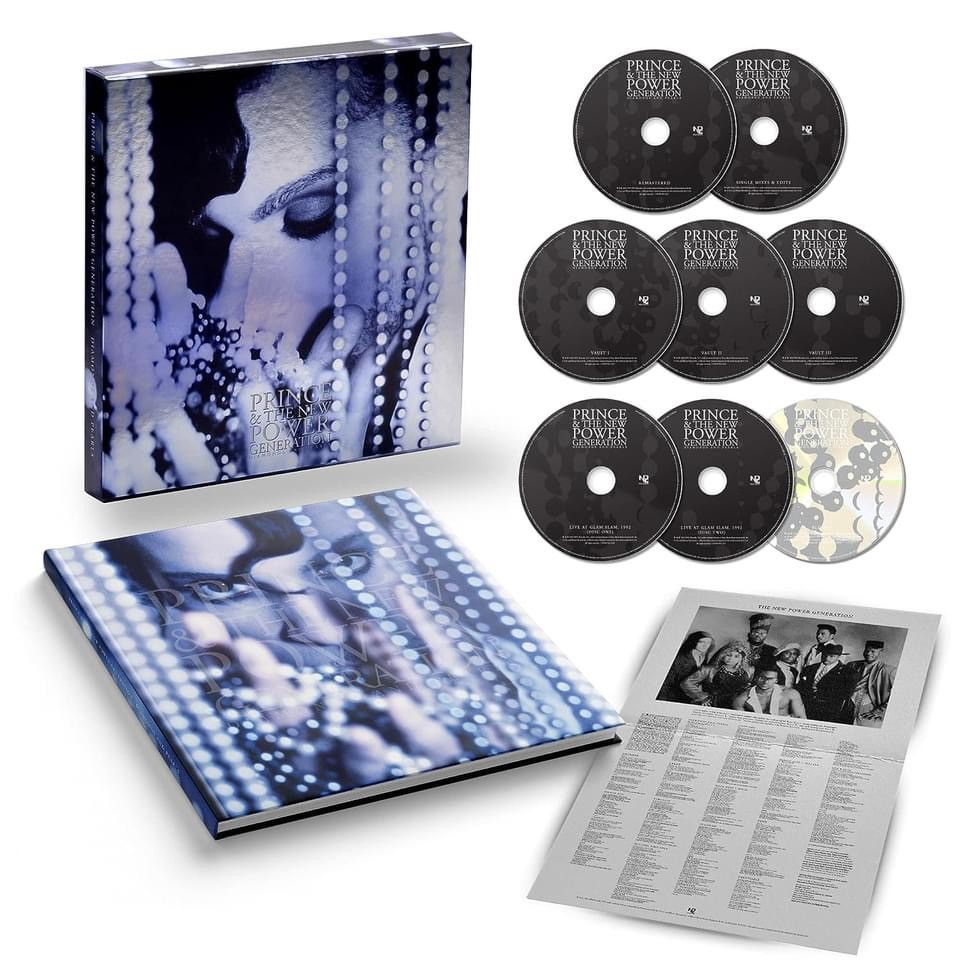
Prince & The New Power Generation
Diamonds and Pearls - 7CD+blu-ray super deluxe
Compare prices and pre-order
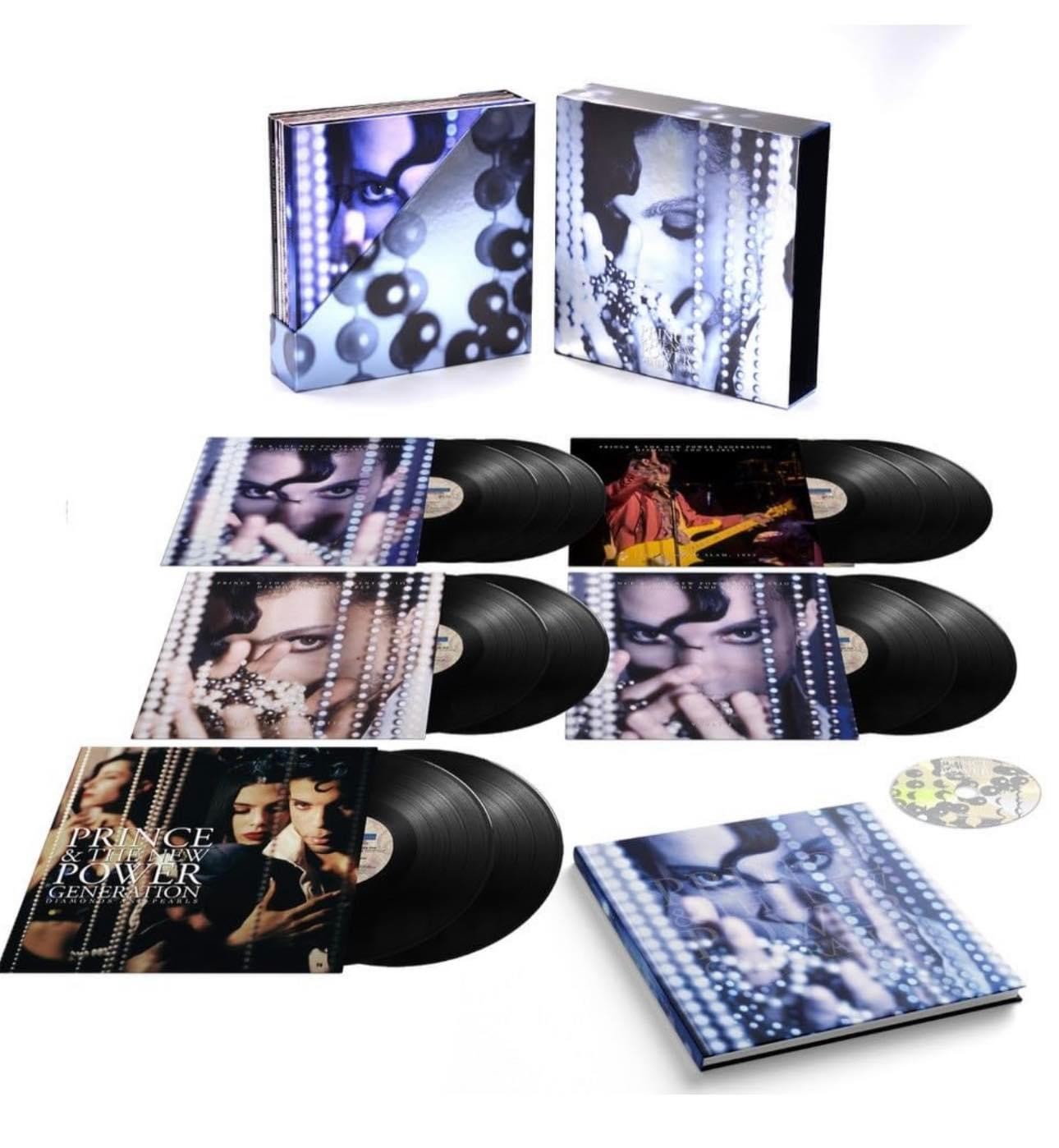
Prince&the New Power Generation
Diamonds and Pearls - 12LP + blu-ray super deluxe

|
|
||||||||||||||||||||||||||||||||||||||||||||||||||||||||||||||||||||||||
Compare prices and pre-order

Prince&the New Power Generation
Diamonds and Pearls - 2CD edition album and remixes and edits

|
|
||||||||||||||||||||||||||||||||||||||||||||||||||||||
Compare prices and pre-order

Prince & The New Power Generation
Diamonds and Pearls - 4LP vinyl - album and remixes and edits

|
|
||||||||||||||||||||||||||||||||||||||||||||||||||||||||||||
Compare prices and pre-order

Prince & The New Power Generation
Diamonds and Pearls - 2LP clear vinyl album only

|
|
||||||||||||||||||||||||||||||||||||||||||||||||||||||||||||
Compare prices and pre-order

Prince & The New Power Generation
Diamonds and Pearls - 2LP black vinyl - album only

|
|
||||||||||||||||||||||||||||||||||||||||||||||||||||||||||||||||||
Compare prices and pre-order

Prince & The New Power Generation
Diamonds and Pearls - single CD remaster

|
|
||||||||||||||||||||||||||||||||||||||||||||||||||||||
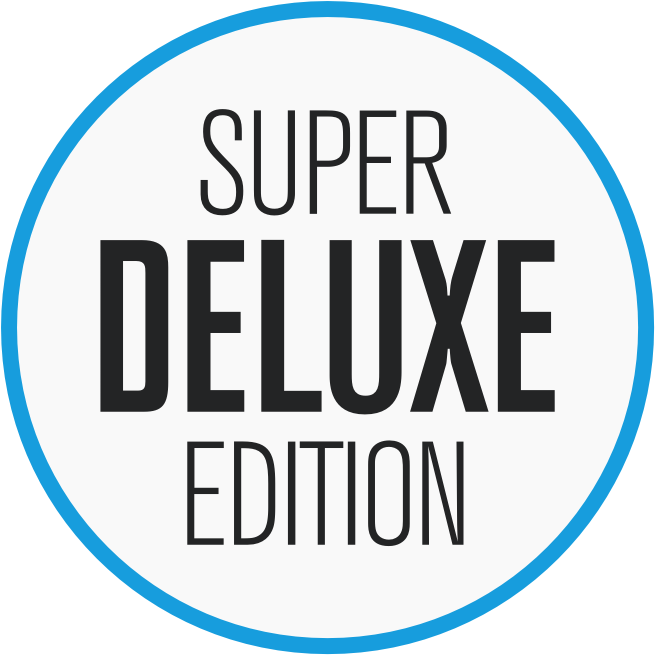
 Interview
Interview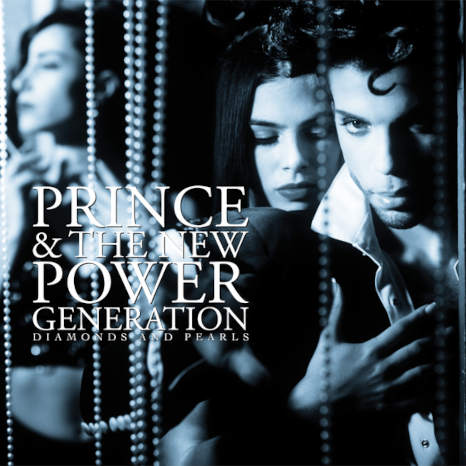
 Reviews
Reviews
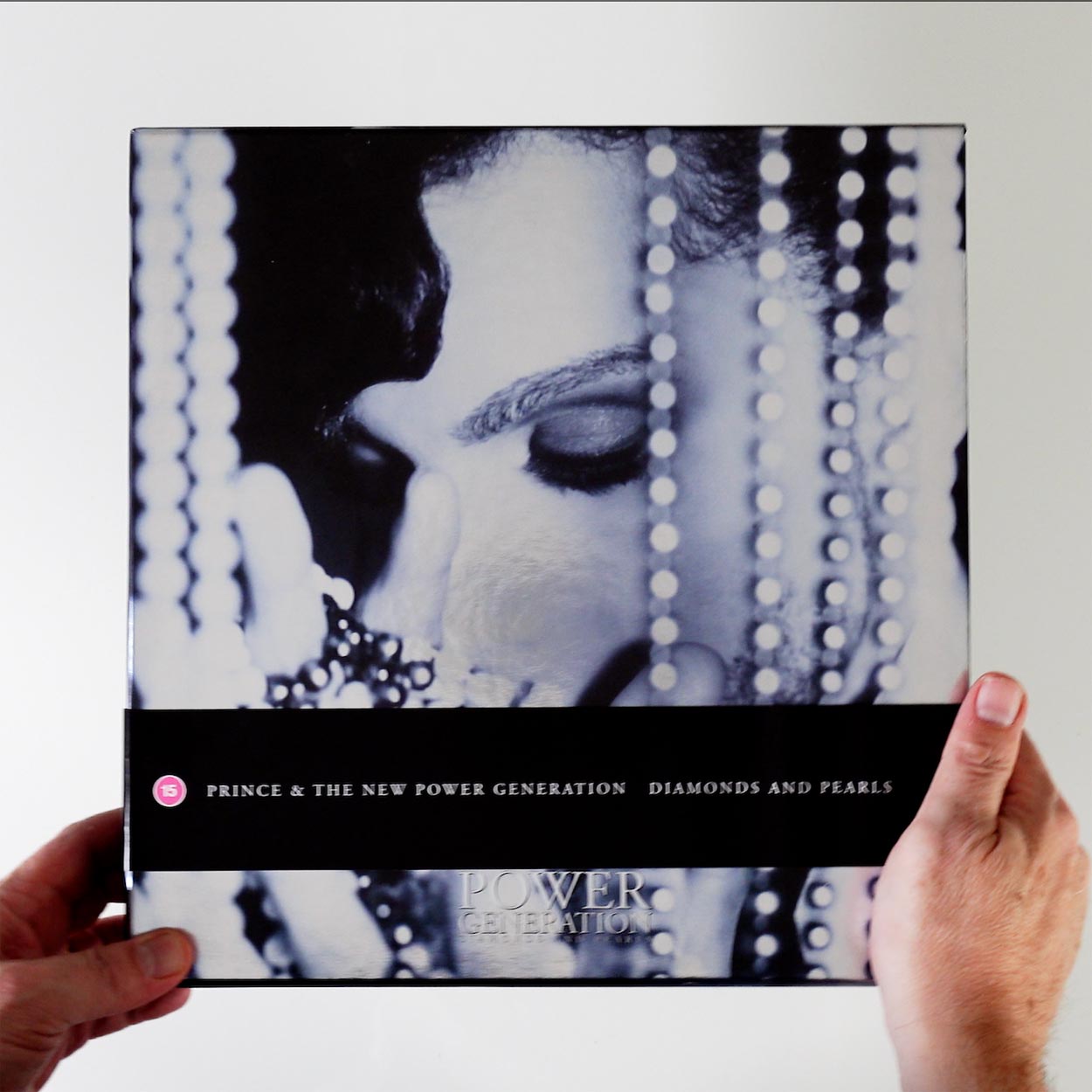
 SDEtv
SDEtv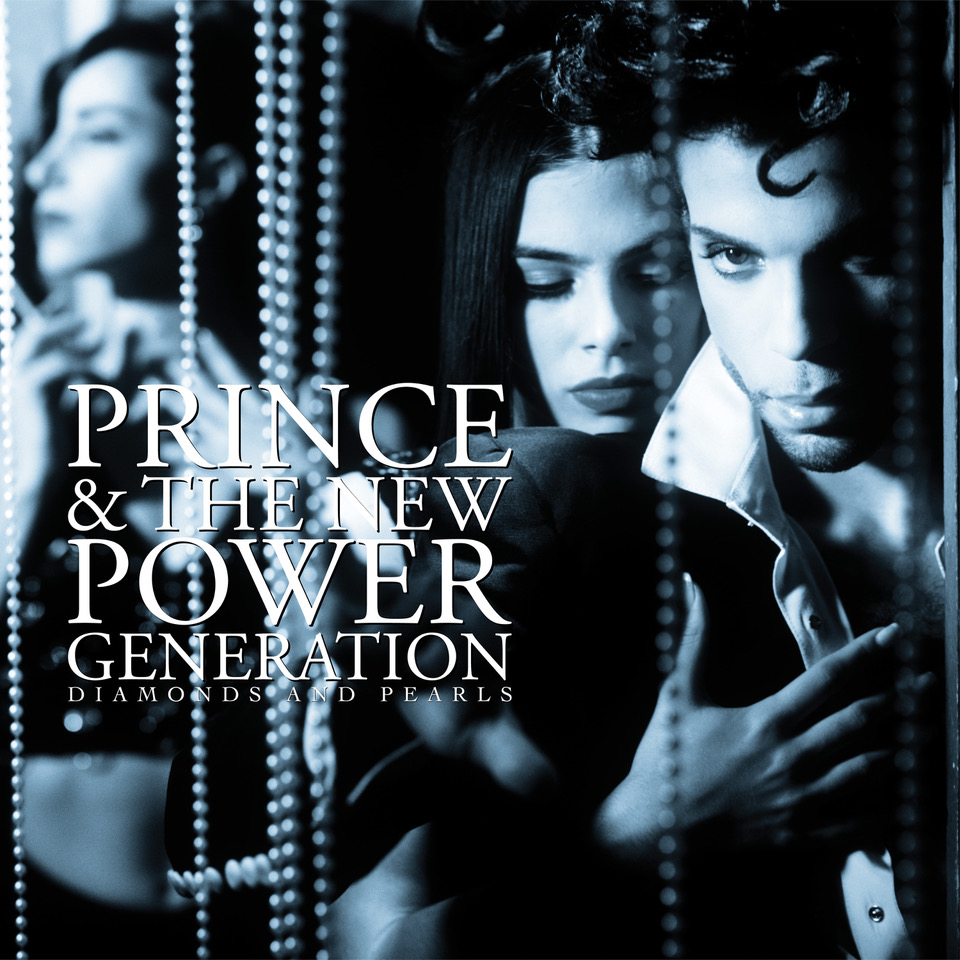
By Paul Sinclair
28